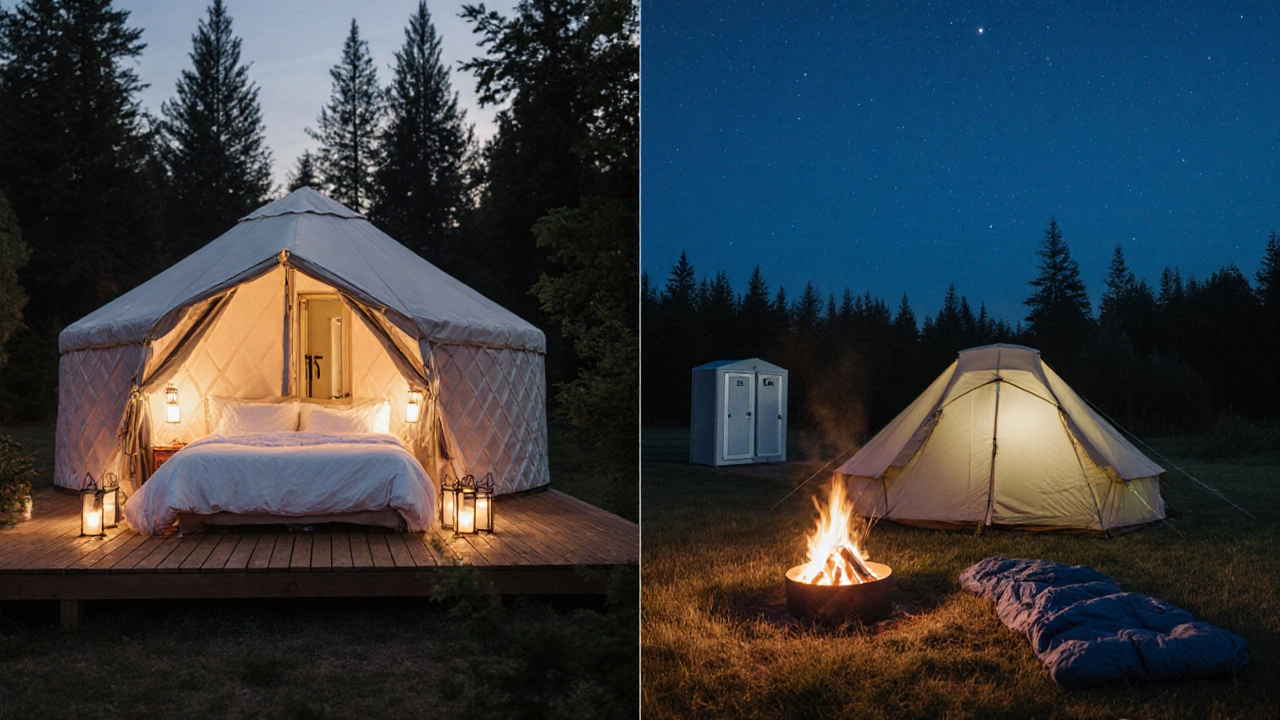
Glamping vs Camping Price: What You Need to Know
When weighing glamping vs camping price, the cost difference between luxury‑style outdoor stays and traditional tent camping. Also known as glamping vs camping cost, it helps travelers decide how much to budget for a nature getaway. Glamping, a blend of “glamorous” and “camping” that offers hotel‑level amenities in a natural setting and Camping, the classic practice of sleeping outdoors with minimal gear represent two ends of the outdoor‑accommodation spectrum.
First, think about glamping vs camping price as a set of components rather than a single number. Glamping includes charges for a pre‑set tent, running water, electricity, and often a private bathroom – each of those amenities adds a line item to the bill. Camping usually only costs a pitch fee, which may cover a fire pit and basic waste disposal. This means the price equation for glamping is amenities + service + site fee, while camping is mainly site fee + optional gear rentals. In short, more perks equal a higher total.
Key Factors That Shift the Cost Balance
Location plays a big role. A glamping site perched on a lake in the Scottish Highlands commands a premium because of its view and scarcity, whereas a forest campsite a few miles away can be budget‑friendly. Seasonality works the same way: summer months see higher demand for both glamping and camping, pushing prices up, while shoulder seasons often bring discounts. Then there’s the type of structure – safari‑style tents, yurts, or tiny cabins each carry a different price tag. Finally, additional services such as meals, guided tours, or pet‑friendly policies add optional costs that can tip the scales.
Understanding these variables lets you match your budget to the experience you want. If you value a hot shower and a comfy bed, expect to pay $50‑$150 per night for a glamping unit in most UK locations. If you’re okay with a sleeping bag and a campfire, $10‑$30 per night for a basic pitch is common. The price gap is therefore often three to five times, but that ratio narrows when you compare high‑end camping (glamping‑style yurts) with low‑end glamping (basic pods).
Another angle is the long‑term value. Glamping sites often bundle activities – kayaking, wildlife walks, or even spa treatments – into the price, which can offset the need to spend extra on tours. Camping usually requires you to plan and pay for those extras yourself, which can add up if you’re not careful. So the headline price isn’t the whole story; the inclusive nature of glamping can make it a smarter spend for some travelers.
When you compare tickets, remember the hidden fees. Some glamping operators charge for electricity use or extra bedding, while many campsites have fees for firewood or waste disposal. Reading the fine print saves surprise costs later. Likewise, look for discounts: early‑bird bookings, off‑peak weeks, or membership offers (like National Trust cottage deals) can shave 10‑20% off the quoted rate.
In practice, the decision often comes down to comfort versus cost. If you’re traveling with kids, a glamping site with a private bathroom can save you time and stress, turning a higher nightly rate into a smoother vacation. Solo adventurers or couples seeking a rustic vibe might prefer the budget freedom of a campsite, even if it means roughing it a bit.
Below, you’ll find a curated set of articles that break down these topics in detail – from child‑age policies in hotels that affect family budgeting, to the cheapest times of year for all‑inclusive holidays, and even specific guides on glamping toilets and electricity. Use them to fine‑tune your budget, pick the right location, and avoid hidden charges, so you can enjoy the great outdoors without any nasty price surprises.
